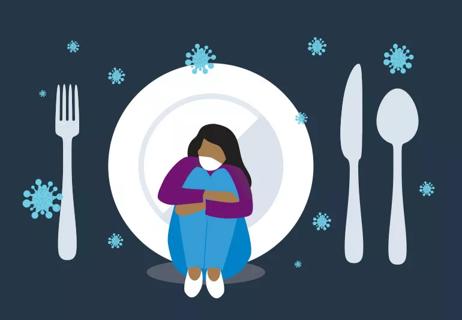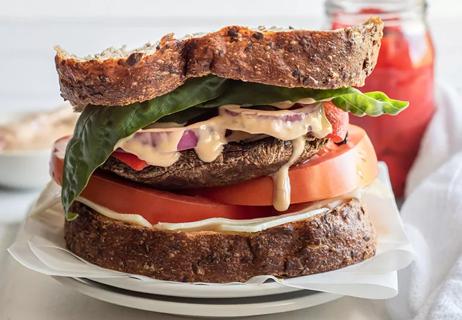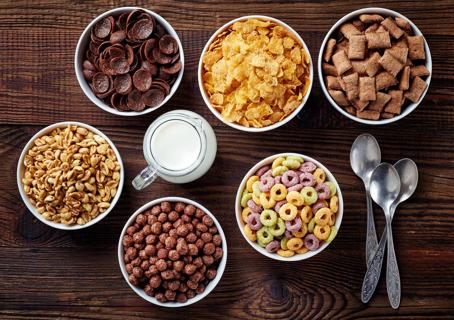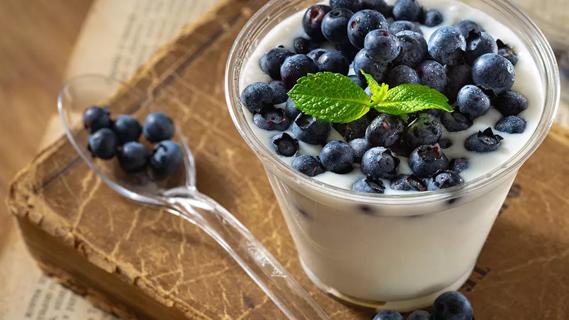Too-strict ‘food rules’ can have negative consequences

Turning down the donuts a coworker brings to the office and packing a salad for lunch every day may be a reason to pat yourself on the back for your commitment to healthy eating, right?
Advertisement
Cleveland Clinic is a non-profit academic medical center. Advertising on our site helps support our mission. We do not endorse non-Cleveland Clinic products or services. Policy
Yes, of course.
But what if the sight of those donuts causes anxiety? Or if eating that plain salad becomes a rigid ritual? You may start to consider if it’s possible to be too concerned with eating healthy.
And you may be right.
In recent years, researchers have recognized that people can become overly fixated on healthy eating, to the point where it could become detrimental to their well-being. A new term has emerged for this behavior: orthorexia nervosa. “Orthorexia” literally means “proper appetite.” This describes a pathological obsession with eating “clean” or “healthy” food.
Psychologist Kasey Goodpaster, PhD, helps us understand when too much of a focus on eating healthy may not actually be so good for your health.
People living with orthorexia engage in restrictive or ritualized eating behaviors and avoid certain foods that don’t fall within their definition of “clean” or “healthy.” These diets can be so strict that they impact the physical or mental health of the people who follow them.
Orthorexia isn’t just someone who follows a strict vegan diet for ethical reasons or eats gluten-free because it makes them feel better.
Rather, a person living with orthorexia obsessively follows rules they’ve created about which foods are healthy and which are not. They may also feel guilty and anxious when confronted with foods that don’t fit their rules.
Advertisement
These behaviors share many characteristics with the eating disorder anorexia nervosa, Dr. Goodpaster says. The difference is that people living with orthorexia are focused on the quality of food, whereas people living with anorexia restrict the quantity of food they intake.
Orthorexia isn’t found on the official list of eating disorders and other mental illnesses that psychologists use to make a diagnosis (the Diagnostic and Statistical Manual of Mental Disorders, or DSM). But the National Eating Disorders Association has addressed it, and Dr. Goodpaster says the conversation has been building over recent years, with more research being performed.
“The obsession with healthy or ‘clean’ eating seems to be another manifestation of our ‘diet culture,’ in which there is a heavy emphasis on thinness often masked by a desire for health,” Dr. Goodpaster says.
Living with orthorexia can be physically detrimental and can impact your overall quality of life.
For starters, eliminating entire food groups could cause malnutrition and extreme weight loss. On the other hand, it could also lead to overeating.
“When entire food groups, such as sugar, are completely eliminated, your cravings increase. When restraint is inevitably broken during a time of stress or change, guilt and shame can be intense and prompt overeating,” Dr. Goodpaster explains. “In a person living with orthorexia, that cycle can begin all over again because breaking their food rules can cause even more guilt and shame.”
There’s also a social component to eating. Sharing meals is a universal way that we humans spend quality time with each other. Sticking to too-strict eating rules with no flexibility can cause social isolation and emotional distress.
Dr. Goodpaster adds that orthorexia can also have an impact on a person’s quality of life due to the extreme amount of time spent thinking about and preparing “clean” foods.
As it’s not an official eating disorder, it’s hard to say where exactly the line is drawn between healthy eating and an unhealthy fixation on nutrition. How can you spot the difference between a health-conscious eater and someone whose concerns about healthy food verge on debilitating?
The National Eating Disorders Association shares these eight symptoms:
Advertisement
Dr. Goodpaster explains that the line between a commitment to healthy eating and orthorexia really lies with the ability — or inability — to practice moderation, and whether the drive to eat healthily creates distress.
“Eating is so complex that it is downright impossible to be perfect,” Dr. Goodpaster notes. “A more sustainable, healthy lifestyle comes from recognizing that deviating from intentions to eat in a particular manner is completely normal and not a sign of personal failure.”
There are few studies evaluating the effectiveness of clinical treatments specifically for orthorexia. Experts say psychotherapy, specifically using an approach called “exposure and relapse prevention,” is likely a good option. This form of treatment has been proven effective for similar conditions, like obsessive-compulsive disorder, and helps to reduce eating-related obsessions by exposing the person with orthorexia to feared foods.
“The media’s interest in this area might prompt more research, which is much needed before orthorexia could become included in the DSM,” Dr. Goodpaster says.
If you or someone you know shows signs of orthorexia, talk with a healthcare provider about your concerns.
Advertisement
Learn more about our editorial process.
Advertisement

Why the last 18 months have been so stressful

It may be mistaken for digestive problems

A comprehensive guide to symptoms, tips for intervention & treatment

A satisfying veggie option with a kick

There are better breakfast options, but if it’s got to be cereal, look for whole grains, high fiber and no added sugar

If the flakes are undisturbed, pristine white and come from the top layer, it’s typically safe to indulge in a scoop

Snacking can bring benefits with healthy food choices and planning

It has nutrients your body needs, but it also comes with some serious health risks

Type 2 diabetes isn’t inevitable with these dietary changes

Applying a hot or cold compress can help with pain